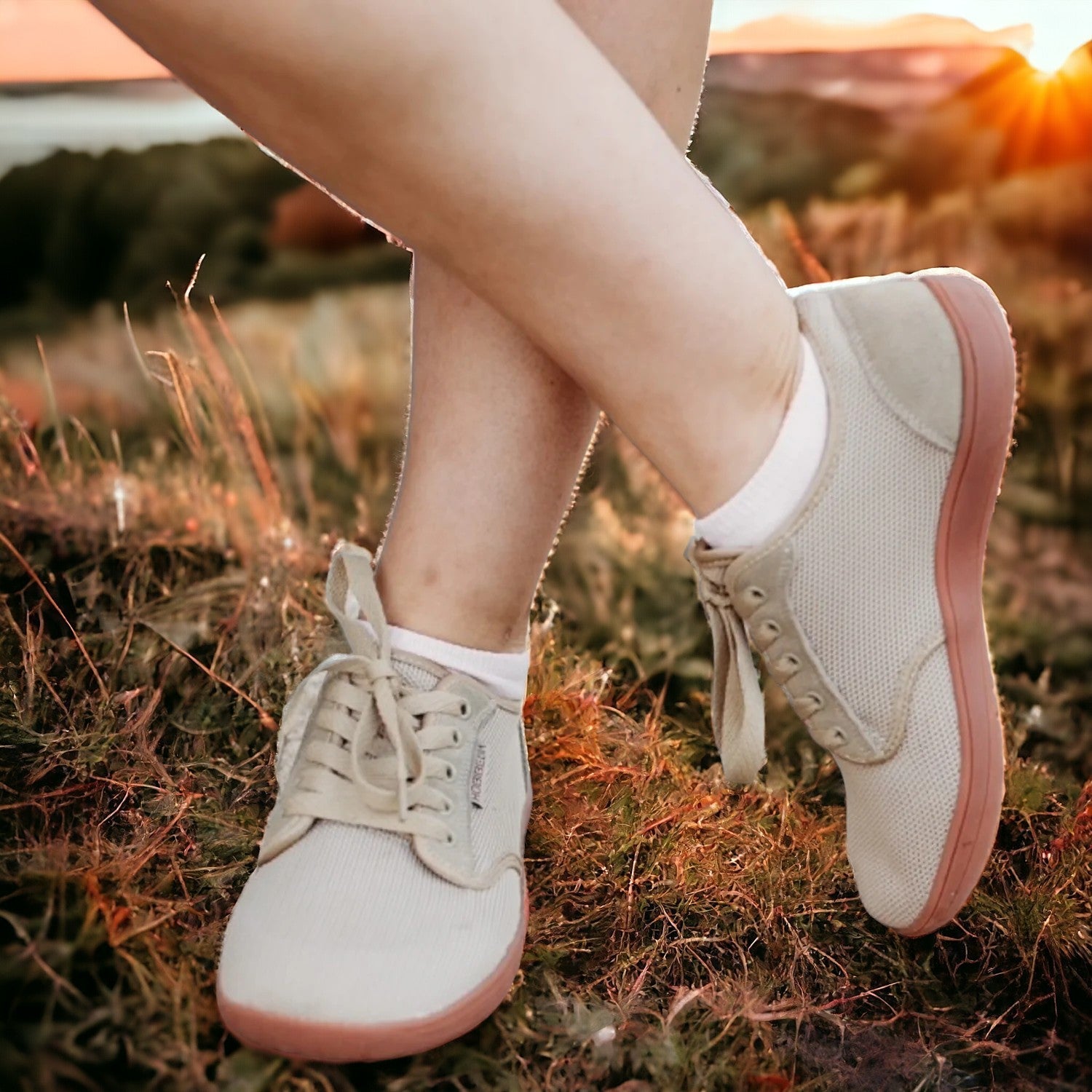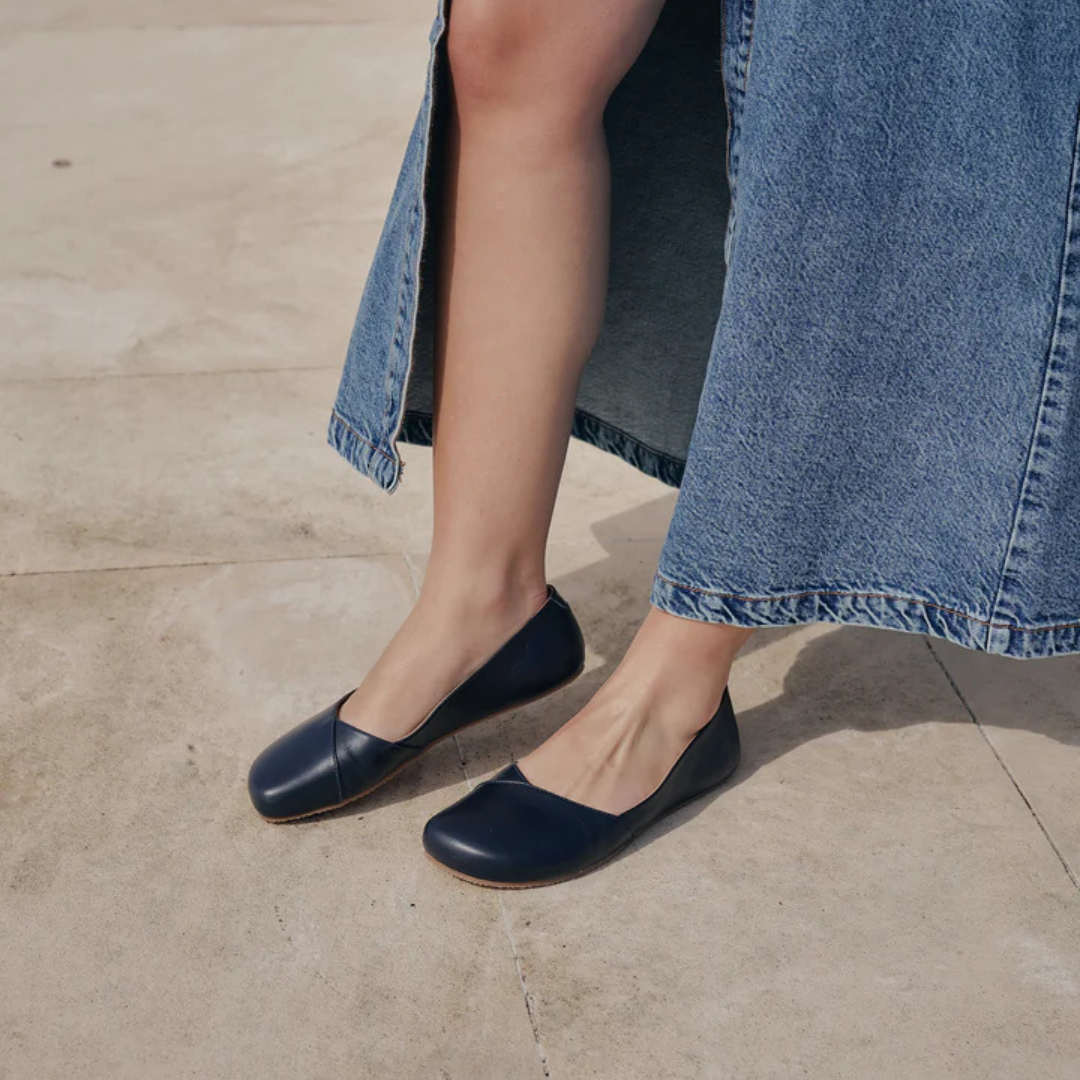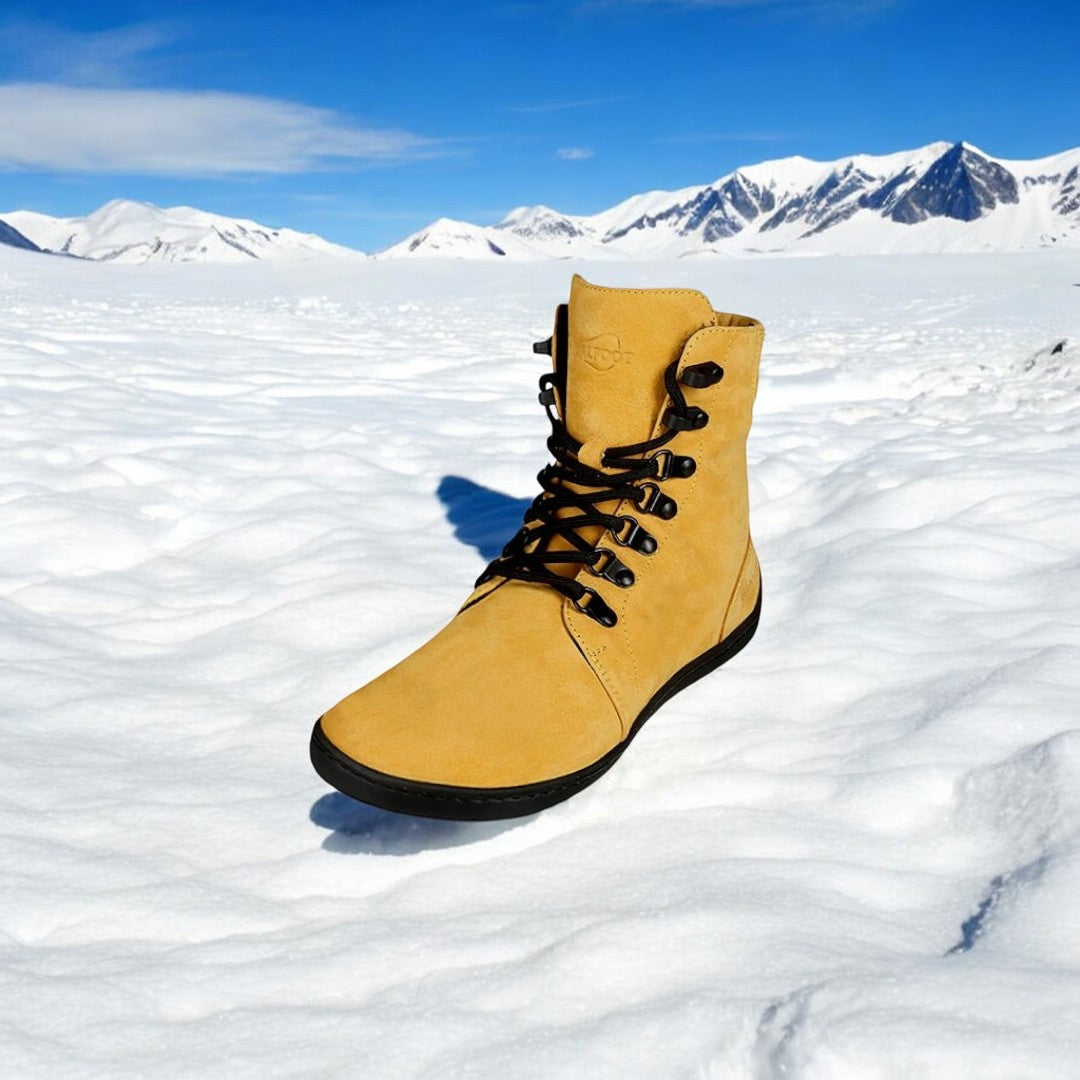
Understanding the Difference Between Barefoot and Minimalist Shoes
The rise in popularity of natural movement and foot health has led to a surge in interest in both barefoot and minimalist shoes. While these types of footwear share similarities in promoting a more natural way of walking and running, they also have distinct differences. In this blog post, we'll explore what sets barefoot shoes apart from minimalist shoes, helping you make an informed decision about which type might be best for you.
What Are Barefoot Shoes?
Barefoot shoes are designed to closely mimic the experience of walking or running barefoot while providing a thin layer of protection against rough or hazardous surfaces. Key characteristics of barefoot shoes include:
-
Zero-Drop Sole:
- Barefoot shoes have a zero-drop sole, meaning there is no height difference between the heel and the toe. This design promotes a natural gait and encourages a midfoot or forefoot strike when running.
- Barefoot shoes have a zero-drop sole, meaning there is no height difference between the heel and the toe. This design promotes a natural gait and encourages a midfoot or forefoot strike when running.
-
Thin and Flexible Sole:
- The sole of barefoot shoes is typically very thin and highly flexible, allowing for maximum ground feel and sensory feedback. This helps improve balance and proprioception.
- The sole of barefoot shoes is typically very thin and highly flexible, allowing for maximum ground feel and sensory feedback. This helps improve balance and proprioception.
-
Wide Toe Box:
- Barefoot shoes often feature a wide toe box that allows the toes to splay naturally. This can enhance stability and reduce the risk of developing foot deformities such as bunions.
- Barefoot shoes often feature a wide toe box that allows the toes to splay naturally. This can enhance stability and reduce the risk of developing foot deformities such as bunions.
-
Lightweight Design:
- Barefoot shoes are generally lightweight, adding to the feeling of freedom and natural movement.
What Are Minimalist Shoes?
Minimalist shoes also aim to promote a more natural foot movement but offer slightly more structure and protection compared to barefoot shoes. Key characteristics of minimalist shoes include:
-
Low-Drop Sole:
-
While minimalist shoes often have a low-drop sole, they may not be completely zero-drop. The heel-to-toe drop is usually minimal, ranging from 0 to 8 millimeters, to encourage a natural stride.
-
-
Moderate Cushioning:
-
Minimalist shoes provide some cushioning to absorb impact, making them suitable for longer runs or harder surfaces. The cushioning is still much less than traditional running shoes.
-
-
Flexible Sole:
-
The sole of minimalist shoes is flexible but thicker than that of barefoot shoes, offering a balance between ground feel and protection.
-
-
Lightweight but Sturdy Design:
-
Minimalist shoes are lightweight but tend to be more robust than barefoot shoes, providing additional support and durability.
-
Comparing Barefoot and Minimalist Shoes
Ground Feel and Sensory Feedback:
-
Barefoot shoes offer the closest experience to being barefoot, with maximum ground feel and sensory feedback. Minimalist shoes provide a similar sensation but with slightly more cushioning and protection.
Protection and Cushioning:
-
Barefoot shoes offer minimal protection and cushioning, making them ideal for those who want to strengthen their feet and improve proprioception. Minimalist shoes strike a balance between protection and natural movement, suitable for varied terrains and longer distances.
Transition and Adaptation:
-
Transitioning to barefoot shoes often requires a longer adaptation period due to the minimal support and cushioning. Minimalist shoes can serve as a transitional option for those new to natural footwear, allowing the feet to gradually adjust.
Usage and Versatility:
-
Barefoot shoes are excellent for short runs, strength training, and casual wear. Minimalist shoes are more versatile, suitable for longer runs, hiking, and more intense activities while still promoting natural movement.
Which Should You Choose?
The choice between barefoot and minimalist shoes depends on your individual needs, preferences, and activities. Here are a few considerations to help you decide:
-
For Maximum Ground Feel: If you prioritize ground feel and want to strengthen your feet, barefoot shoes are the way to go.
-
For Added Protection: If you need a bit more cushioning and support for longer runs or varied terrains, minimalist shoes might be more suitable.
-
For Transitioning: If you’re new to natural footwear, starting with minimalist shoes can help your feet adapt gradually before transitioning to barefoot shoes.
Conclusion
Both barefoot and minimalist shoes offer unique benefits that can enhance your natural movement and overall foot health. Understanding the differences between the two can help you make an informed decision and choose the right footwear for your lifestyle. Whether you opt for the pure experience of barefoot shoes or the balanced approach of minimalist shoes, embracing natural footwear can lead to healthier, stronger feet and a more connected experience with the ground beneath you.
Explore our range of barefoot and minimalist shoes at Ravello Barefoot Shoes and take the first step towards natural movement and improved foot health.


















